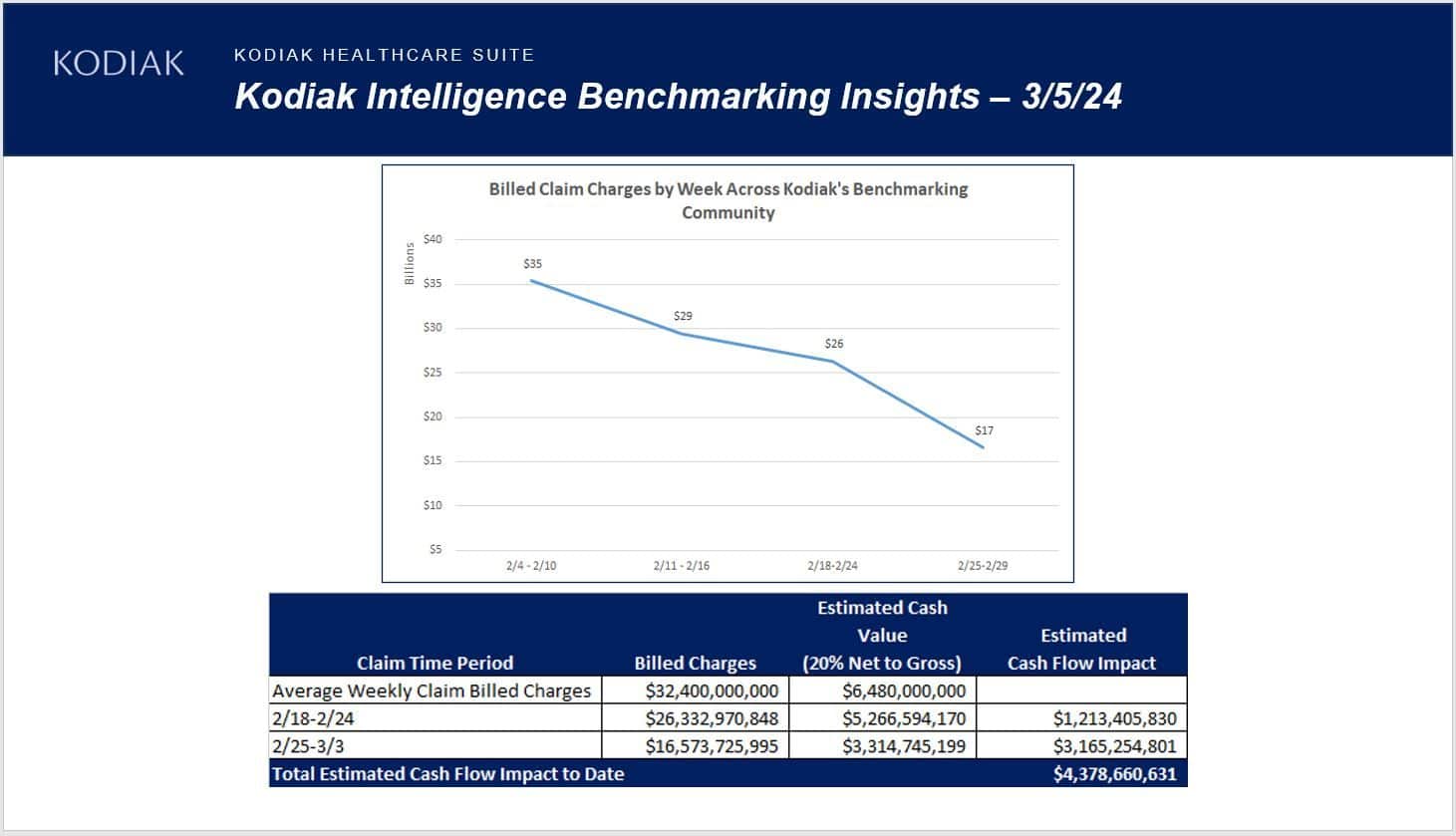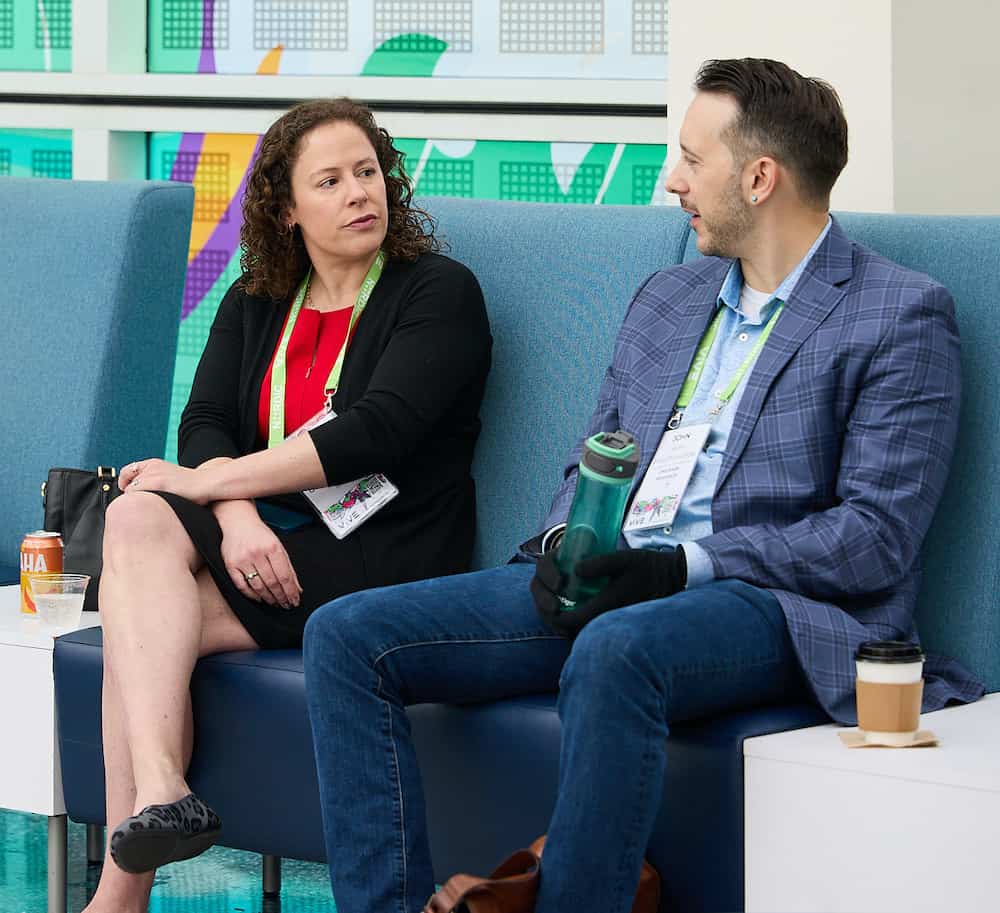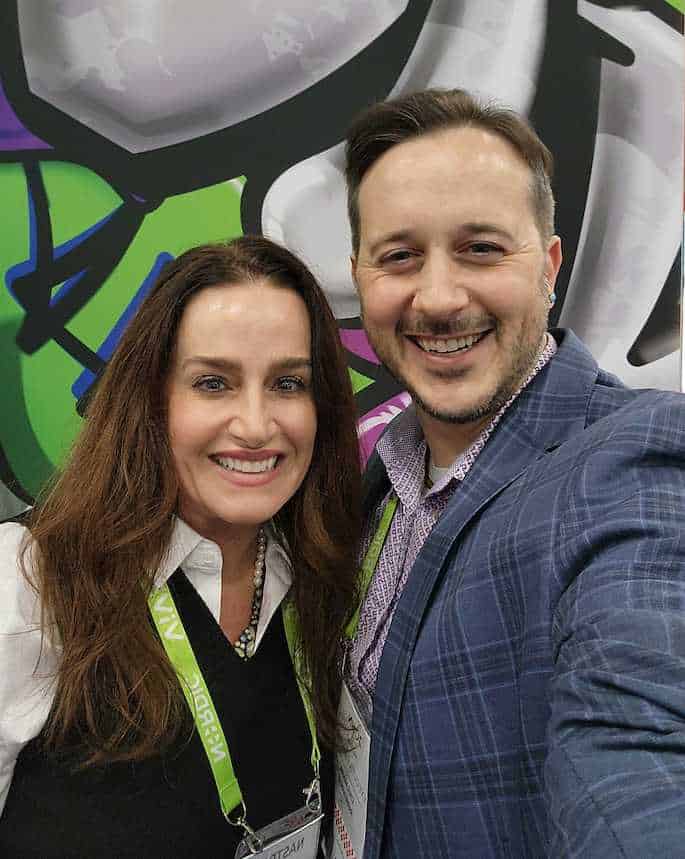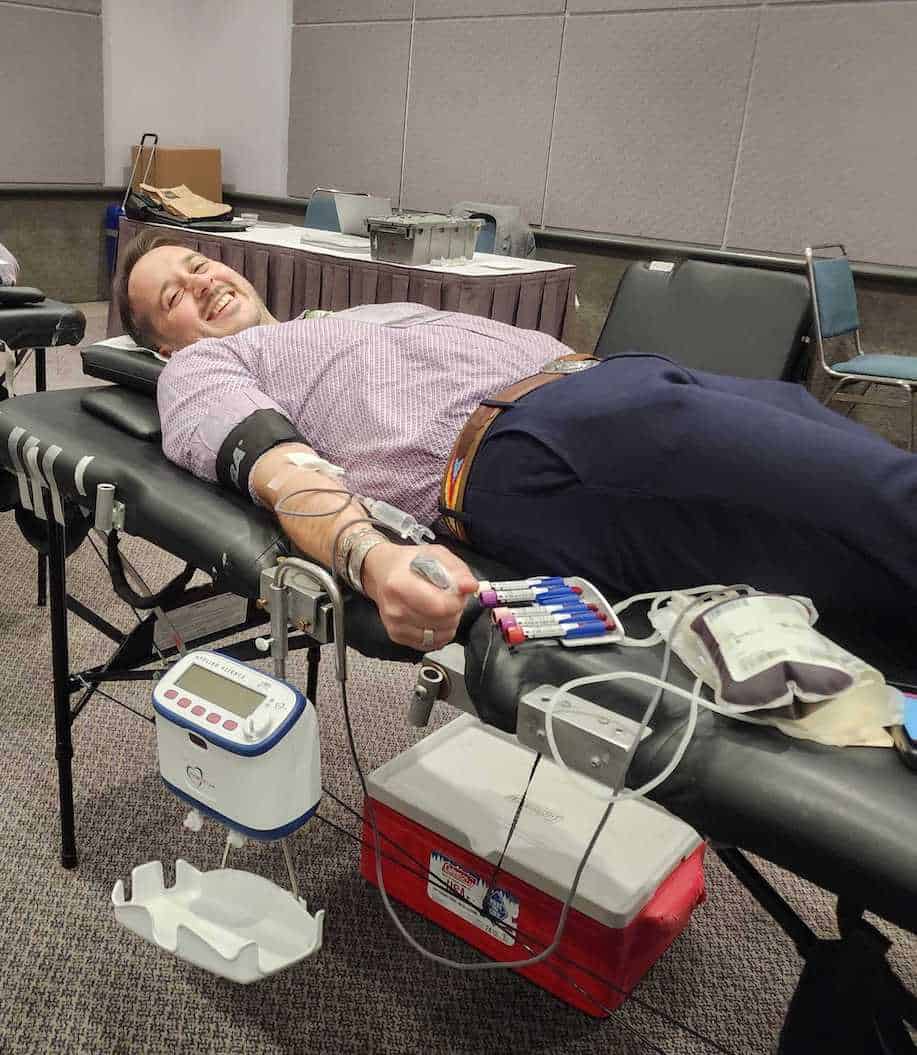ViVE 2024 solidly filling gap left by HIMSS’ acquisition – and abandonment – of Health 2.0
The Health 2.0 conference in 2011 was my first big(ish) health IT conference, and it will always have a special place in my heart for that despite volunteering while on crutches. I had stopped attending by the time it was acquired by HIMSS, so it’s interesting to see some of the similarities on display this year at ViVE 2024, the first ViVE event I’ve attended. I was only there briefly, but I left feeling like it was a bit of a Health 2.0 v2.0: a more robust program that covered more area in the sessions, but still largely focused on driving the digital health hype train.
One notable takeaway on a more personal level is that our updated 2024 research agenda was thoroughly validated during my floor tour and meetings. Read on for an overview of my 48 hours in LA.
Key Takeaways:
![The young [pre-]medical professionals attending as part of the Digital Health Equity Ambassador Program at ViVE 2024.](https://www.chilmarkresearch.com/wp-content/uploads/Digital-health-equity-squad-1-1024x707.jpeg?extend_cdn)
Diversity is where the HLTH organizers really outshine the HIMSS national conference, which was also clear at their October conference. There is clearly intention applied to making sure that the Techquity initiative / HLTH Foundation bring in founders and speakers from all avenues of life. It was inspiring to see some young clinicians I met at the Pink Socks gathering at HLTH launch their own digital health equity program for pre-med students.
Community Health Centers and the Medicaid opportunity were featured far more prominently than I’ve seen at other events. The NACHC ‘pre-conference’ session and the Ventures 4 Medicaid panel on Sunday were both standing room only. Luis Belen, CEO of NHIT, was mentioned in so many after-event posts he’s practically at celebrity status.
Care coordination has resurfaced as a big topic at both ViVE 2024 and the Health Analytics Summit (HAS24). I think everyone is realizing that if we (the whole industry) can’t effectively enable clinical care coordination, how the heck are we supposed to coordinate with CBOs to address SDoH / HRSN?*
Biggest organizer gaff was screwing up meals on Monday. While this upset quite a few people I saw that day, it hit me particularly hard because I had just donated blood (a blood drive is honestly a fantastic thing to host at a healthcare conference) and was relying on that lunch to restore myself. I can forgive the food trucks running out, but not the venue caterers breaking down the meal stations 20-30 minutes early.
Notable Announcements
Biofourmis – GE partnership: Fierce has the most comprehensive coverage I’ve seen of this so far. I had a follow up discussion with Ryan Fox yesterday to dig into the deal a little further since we didn’t have enough time to get into things at the conference. He confirmed that this strategy was driven by GE’s desire to help their clinical clients address ongoing, worsening capacity issues by partnering with an organization that can deliver on “timely discharge” and hospital-at-home care, freeing up beds that can be used for more high-acuity patients.
Included Health showed that the core concept for my startup in the early 2010s (RxApps) is finally having its day. Granted the application is even simpler than what I was trying to accomplish, but the bones are the same – checking in with people regularly lets you know if they’re having a rough time and allows for earlier, preventive intervention (surprising no one, but now we have a large study to prove it).
Epic continues growing their base of Payer Platform users with the addition of Highmark Health in a partnership with GCP (who I’m seeing pop up more and more lately). I still hear plenty of skepticism from folx who have been in the industry long enough to see a few attempts at connecting payers and providers, but it’s still great to see this progressing.
Payment disruption hits nationally – and hits hard
The industry’s most significant black swan event, other than the PHE of course, cast a pall over both events I attended. Since details were still emerging though, it was more, “what does this mean?” than anything truly substantive. I certainly don’t envy Dr. Amar Desai, Optum’s CEO, who took the stage Monday morning and as we all know by now, didn’t have anything useful to share with attendees (and nothing has really changed wrt transparency around what happened).

From $35B the first week of February to $17B at the end of the month, the Change Healthcare breach is crippling many orgs dependent on their clearinghouse services.
Just when hospital finances were starting to look like they were on a steady recovery trajectory, the country’s largest healthcare clearinghouse goes dark. The Change Healthcare hack was the unexpected black cloud over everything in LA, which had everyone wondering wtf happened, and how bad is this going to be? Well, the early results are in, and it’s pretty terrible. I went off on a bit of a rant about the poor crisis leadership yesterday when I found out that Aledade had stepped up to financially support their providers, while UnitedHealth Group / Optum were doling out insulting checks of ~$1000/week.
Drex DeFord broke down the Change Healthcare hack and the Ransomware as a Service business model in a post on LinkedIn. As he put it, “If AI was Cinderalla as a topic this year at ViVE, then Change Healthcare and this cyber-attack was her evil stepsister…I heard the cyber event referred to as healthcare’s version of the Colonial Pipeline breach.”
Meetings still beat sessions at these events – especially for industry veterans
Due to my time crunch leaving for the Health Analytics Summit on Tuesday morning, my entire ViVE schedule was meetings. I’ve grown accustomed to this as it’s how I was trained to do conferences, and there are times I lament missing certain sessions when I hear about them later.
Then I see event takeaways from industry veterans and I remember how few of the sessions would actually provide me with much novel perspective. For us, it’s about the meetings. For those new(er) to these conferences, sessions are a great way to start learning and I remember how it can feel like drinking from a firehose at first. However, the industry has achieved a level of maturity at this point where there really need to be tracks of advanced sessions at trade shows for more actionable learnings, not just attempts at getting the “next big thing” in healthcare covered by more mainstream media to keep the hype going (though there is still some value in that).
Carrie Kozlowski, founder and COO of Upfront Healthcare (who we did a podcast with in October), expressed this frustration on LinkedIn, “Most of what I heard first hand from speakers or from my connections, who were equally disillusioned, centered around the lack of people and discussions from the folks who are actually doing the work.”
To really attract the buyers and decision makers, similar educational value as that provided by many of the more academic, single-theme, or user group events needs to be offered. This was made even more apparent when juxtaposed with my experience at HAS, which I will be posting about next week.
So who did I meet with?
Below is a list of vendors I took time to connect with onsite in LA:
SEQSTER – Ardy Arianpour is a madman. If you ever want a cup of coffee in human form at an event, find him. As someone else who started his career bench-side in genetics research, we ended up connecting on a personal level more than professional, and now I’ll be hosting him on an upcoming episode of the Chilcast. We only lightly touched on how the “SEQSTER OS” is tackling 360° interoperability, incorporating genomic and medical device data, among other more common sources like EHRs, into their longitudinal patient records.
KeyCare – According to LinkedIn, I’ve known KeyCare founder Lyle Berkowitz for over a decade now. In that time, he has exited his own startup (Healthfinch), helped get MDLive positioned for its acquisition by Cigna, and is back in the saddle with this latest virtual care play. When I first heard they were building an Epic-based telehealth platform, I didn’t really see how that would be enough of a differentiator to compete in the already crowded telehealth space. As often is the case with these things, that just made them unique, but it’s been the execution where they’ve been able to win hearts and minds of prospects. They’ve been wise to tackle 24/7 virtual urgent care as their first service, as this helps immensely with triaging ED visits and directing patients to the right setting for their care. This also improves the patient experience and keeps them in-network, a win for everyone.
Urgent care is just the beginning for them though. The big vision is to essentially take on any care workflows that fit the 3 Rs: routine, repeatable, and rules-based. Hearing Lyle talk about this really puts into perspective how easy it would be to make some simple changes to the process of care delivery that could fundamentally enable more true innovation around care models. It isn’t tremendously transformative to the way the industry works today – some might even lump it in the “incrementalism” category – but by leaning into the processes that are tried and true, and showing buyers that value can be achieved through these types of digitally-driven extensions of care services, hopefully further transformative innovation won’t seem as scary.
Amwell – Probably one of my more interesting meetings was with Amwell’s CEO and Co-Founder, Roy Schoenberg. Amwell is a Boston health startup success story, so I’ve watched the company go through many phases at this point after meeting Roy in my early days at local innovation gatherings. I think I took Roy a little by surprise when I jumped right to the question everyone is asking: how is Amwell going to recover from their recent performance in the public markets?
I have to hand it to Dr. Schoenberg – he’s as good a salesman as I’ve heard. I left pretty convinced that they will be showing a very different side of the company in the next year, at least from a financial perspective. As with a number of other more established companies in the industry, AmWell has been going through a replatforming process for a few years, with the added complexity of acquiring Conversa and SilverCloud during that time. The new platform, Converge, is now live and they’ve transitioned ~70% of their clients over, who so far have responded favorably to the new system. This had stalled out their business development efforts for a couple years though, Roy stating that they didn’t want to put anyone new on an outdated system (that tracks, but we’ll see if that’s the only thing that stalled BD efforts soon enough).
I’m quite curious to see how the telehealth market progresses now that we seem to be at a post-PHE equilibrium that shows steady, slower growth, and younger generations liable to be much more inclined to use these services as time marches on. Virtualizing care functions like triage, basic communication, and even aspects of behavioral health offers a compelling value proposition around access for organizations that are more often than not beyond capacity these days.
Infermedica – Another digital front door vendor, I was impressed by Infermedica’s ex-US successes. I’ve seen them around events for years, but have never actually spoken with anyone from the team. They’ve been partnered with Microsoft since 2020 on the Azure Health Bot as one of their main triage providers, and utilize deterministic models, which are far more practical and safer in a medical context than predictive models. Just like with Lyle, Infermedica frames their value around their 3 Es: Education, empowerment and engagement.
Before moving on, I want to call out that empowerment was a word I heard a lot more on the floor and in conversations than ever before. Someone on a stage even said engagement should be called empowerment, but I think Infermedica gets it right that they are different, albeit related, strategies.

Chatting with Sarah Matt, MD, on Sunday after registering.
Lumeon – We’ve done some work with Lumeon in recent years, and it was nice to finally meet their Founder CEO Robbie Hughes in person. He’s feeling very optimistic about the year ahead, seeing a true operational need for automation finally being recognized – and more importantly accepted – across the industry. They have some interesting new partnerships in the works to help integrate their system even more seamlessly into clinical workflows. Imagine an ambient scribe identifying specific diagnosis and matching orders (the care orchestration piece) to a care pathway, letting a provider initiate all the next steps with a single click to confirm. The reduction in both cognitive and administrative burden seems pretty obvious there.
I also met with Project Ronin (RIP), UiPath (excited for my follow up briefing), DirectTrust (need to bolster my cyber chops to talk about this topic), Particle (setting up a briefing for post-HIMSS), and Clear (one of the more intriguing consumer brands to make a healthtech play – keeping an eye on this one).
Casual meetings
Oracle Health – I ran into Dr. Sarah Matt, the VP of Product Strategy at Oracle Health, just before the focus group she was conducting with CHiME. I’m looking forward to hearing more about that session, but her most notable takeaway resonates with what I’ve been hearing since Epic’s UGM last August: data governance protocols are a top priority for buyers / implementers given the rapid advancement of AI, but data quality is still a significant hurdle. Governance was also a *key* topic at HAS24, and I’ll be sharing some insights on that from UC Davis next week.

John and Nastran reunited years after last seeing each other.
Trualta – I spent some casual time with CEO Jonathan Davis and CRO Nastran Anderson. I’ve known Nastran since my earliest days in the industry when she was still at RelayHealth, so I always make sure to check in if we’re in the same city, which hasn’t happened in some time. I mostly want to use this to shout out the really great work that Trualta is doing to help support non-clinical caregivers.
Panda Health – Former Chilmark Senior Analyst Matt Guldin is now at Panda leading their Market Intelligence efforts. Matt’s one of my favorite people to speak with as he is a bit savant-like in his ability to retain knowledge, so I always learn something from him. We mostly just riffed on where the industry is headed, what’s real in AI, and what Panda is hearing from their prospects and clients.
Newfire Global Partners – Caught up with Will Crawford, a technical genius IMO, who I met back in my startup days when we were both working at the Cambridge Innovation Center (which is also where I met my life partner). Newfire is seeing significant growth in demand for their services, so if anyone knows a strong sales leader in the tech services sector, they’re likely going to be looking to fill that role soon.
Notable post-ViVE takeaways from the LinkedIn community:
- Nana Ahwoi, EY Cybersecurity Consultant shared some of the cyber best practices / common weaknesses that EY has seen with their clients.
- Michael O’Neil of GetWell calls out the need for fewer point solutions and better integration into the workflow
- One of my favorite follows on LinkedIn for AI regulatory updates, Alya Sulaiman, gave our friend Grace Cordovano a shoutout for the same line used for the title of my post about our podcast, “Everything in healthcare (including AI) that touches the patient should be aligned with giving people a competitive advantage against their diagnosis.”
- I’ve seen a number of posts from the nursing community, many quite thrilled to have their voices featured as prominently as they were at this year’s event.
- One of our Advisory Board members – and certified HIMSS Changemaker – Christopher Kunney offered us his quick “Red-Eye Recap,” focusing on the positives of his experience, which were largely framed around the collaborative nature of the event and attendees. Be sure to check out his podcast “Straight Outta Health IT” for the interviews he conducted onsite.
- I was a little surprised that Highmark Health wrote an article on LinkedIn sharing their four takeaways, until I realized all four were tied to their participation in the event. Still always useful to see how a payer is approaching their digital health strategy and gauging how much actual progress is being made on that side of the industry.
*In mid-February, a TX colleague I’ve met recently, former Gartner analyst Seth Feder, actually wrote an article on care coordination and its essential role in addressing SDoH.





John, excellent wrap up and it was great seeing you there! I agree that sessions at HIMSS are much better—peer reviewed, vetted and meaningful users on stage. LOVE you Monday briefings! Keep up the great work, Beth